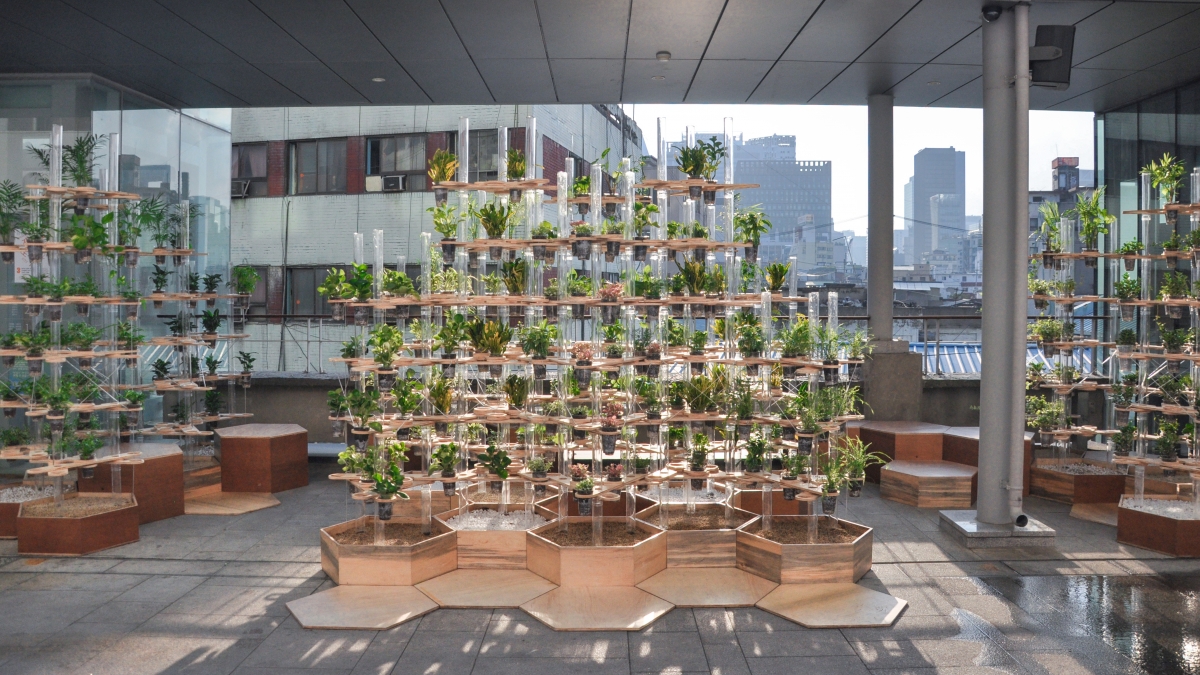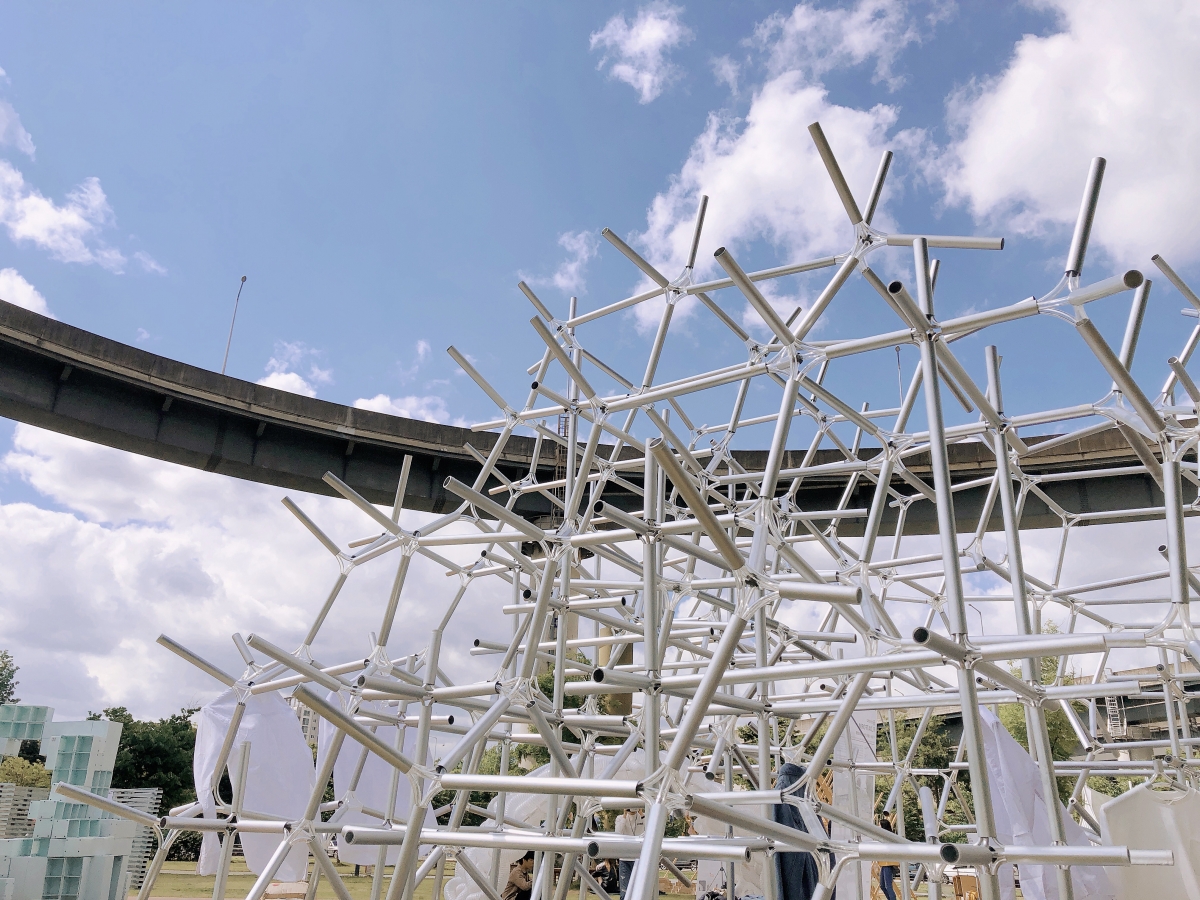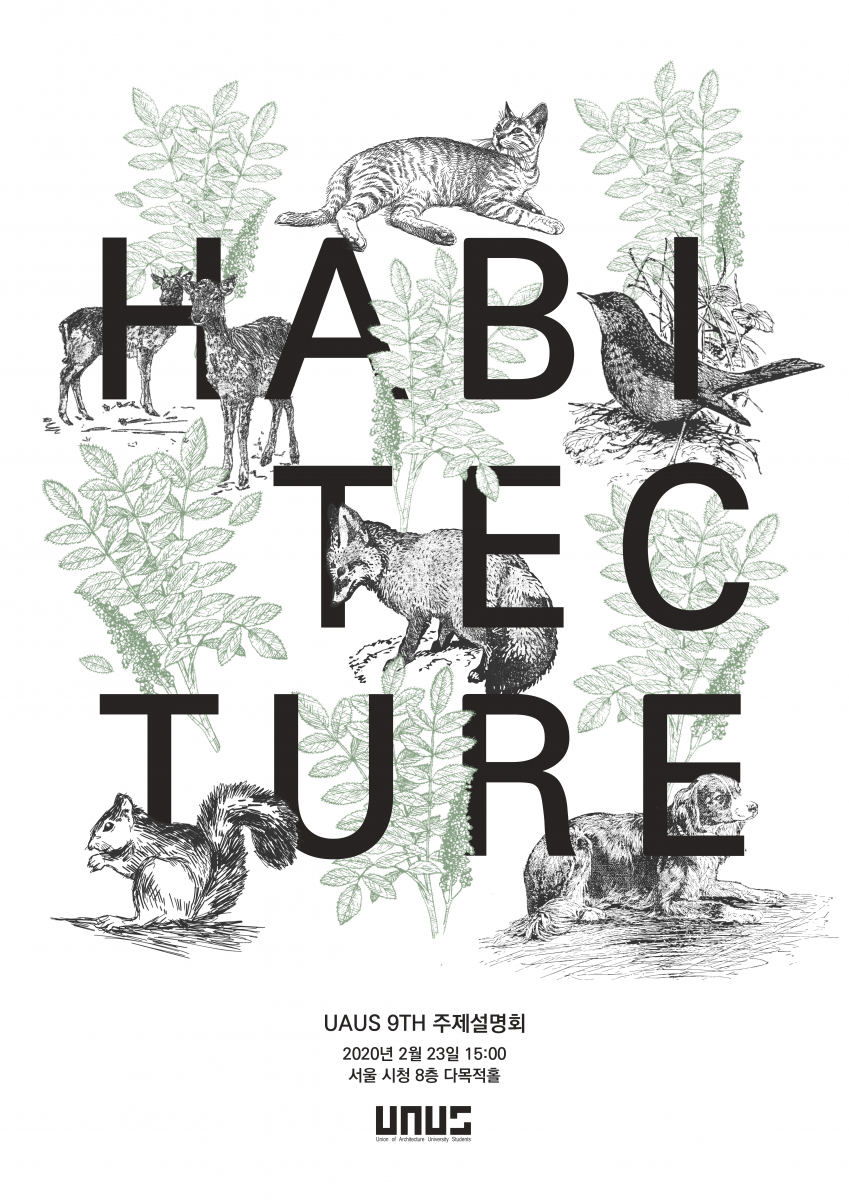UAUS (Union of Architecture University Students)
LeaderㅣKim Dongwook, Chang Hyelim, Jung Wookho
MemberㅣKim Kyunghwan, Kim Kyuri, Kim Minkyung, Kim Subin, Park Soeun, Park Haeju, Yun Donggeon, Lee Kyungjin, Lee Minkyu, Lee Hyeseung, Jung Minwoo, Choi Sunjin, Cho Yeonjoo
Period of operationㅣ2011 – ongoing
Main programmeㅣmaking pavilion, exhibition, event
Operational aimsㅣTo hold exhibitions and various events aimed at popularising architecture and exchanging views between students of architecture.
Websiteㅣwww.uaus.kr


interview Jung Wookho student, University of Seoul × Choi Eunhwa
Choi Eunhwa (Choi): UAUS is the abbreviation for the Union of Architecture University Students, which is comprised of 21 universities and about 300 to 400 student members. It is a large organisation. Please explain how the union is structured.
Jung Wookho (Jung): The union is composed of an event planning team, a leadership team that represents affiliated universities, and students from each university that participate in our exhibitions. The planning team is made up of the organiser and host of the event, and the first prize winner in each year is also included in the planning team for the next event. The leadership team recruits staff members required to host an event and distributes key information to make sure that students can participate in events without any problems. Participating students are expected to suggest creative interpretations of the annual topic and devise the objectives of UAUS and its events.
Choi: What is the goal of UAUS? And why have you chosen a pavilion as its representative medium?
Jung: UAUS aims to introduce architectural culture to the public, promoting exchange between architecture students and inspiring creative energy. The pavilion is different from architecture in that it is relatively free from functional or economic constraints. By taking advantage of such freedoms, students can conduct various architectural experiments, and they can come up with an innovative designs every time. Novel approaches can stimulate the public’s interest in architecture or cultivate a lasting memory of a place.
Choi: The union is led by students. There must have been questions and difficulties concerning the process of constructing a real building?
Jung: A design conference offering lectures by architects, student presentations and critiques from tutors has been such a valuable point of instruction. Through lectures by architects, we come to a better understanding of how a pavilion is constructed and are therefore equipped with the knowledge required to develop new ideas. The student presentations and tutor crits enable us to see more clearly what we might have missed. Professors at our universities also give us a lot of support.
Choi: This year, you have decided to move the pavilion exhibition to an online event due to the Coronavirus Disease-19 pandemic. How have you programmed this online exhibition?
Jung: Our online exhibition’s main objective is to attract public participation and interest. I think the merits of an online exhibition lie in its accessibility, encouraging wider participation and increasing the number of attendees, and in the fact it places no limit on time and space. This means that it can convey the ideas and intentions of a creator more effectively and employ a wide range of media. We are planning to programme our online exhibition differently to that of our website, YouTube, and Instagram. On our website, student works and ideas on this year’s topic of UAUS will be presented in an intuitive way. On UAUS’s YouTube channel, lectures by tutors, tutor interviews and the ideas of students will be shared in the form of a video clips to guide the public in their understanding of the exhibited works. On Instagram, one of the most popular platforms, a public participatory SNS event will be held to promote exchange between students and the public. These events will start on the 25th of November.

Archat
Editor-in-chiefㅣPark Jiwon
Period of operationㅣ2017 – ongoing
Main programmeㅣpublishing magazine, discussion, movie screening
Websiteㅣarchat.tistory.com
Archat is a quarterly magazine first published by architecture students in Seoul in the autumn of 2017. According to the Archat Editorial Team, their aim is to ‘introduce the latest architectural trends through their own text, looking into the reality of our architectural community and creating an open platform for young architects to share their ideas’. They want to be considered as a ‘young architectural magazine’ that explores architectural discourses from the perspective of a student and freely expresses personal opinions on architectural issues in writing.
The Archat Editorial Team is composed of about 20 editors, designers and media creators. The team selects a topic for the magazine in their weekly editorial meeting, conducts ‘casual conversations’, and they write and edit articles accordingly. They have published the magazine on a seasonal basis, guided by different topics such as ‘Architecture and the Sweet Potato’, ‘Architecture and Erotica’, ‘Architecture and Rain’, ‘Architecture and Perfume’, ‘Architecture and Hibernation’, ‘Architecture and Romance’, ‘Architecture and Matchsticks’, ‘Architecture and Picnics’ and ‘Architecture and Social Distancing’. So far, a total of 11 issues have been published. The magazine contains a wide range and styles of article, including ‘memoirs from everyday life’, ‘essays about the city, architecture and space’, ‘easy-to-read architectural theory’ and ‘provocative critiques’. These meaningful ‘chit-chats’ reveal the passion of young students who want to explore architecture from new perspectives and gain greater familiarity with their discipline.
Alongside publishing the quarterly magazine Archat, the team regularly hosts ‘Chat-Gathering’, an open forum event for architecture students, and a ‘Movie-Night’, architecture-themed film screenings. These additional events are evidence of their sustained effort to explore architecture from the viewpoint and perspective of a student without being constrained by fixed formats or normative practices. Their activities and outcomes have provided architecture students with an open channel to participate in the living discourse of architecture, through architecture and for architecture.
UAUS and the Archat Editorial Team are all young undergraduate students full of passion and energy and take the initiative in planning and leading every detail of their events. They freely express their own ideas on architecture from the perspective of a student with genuine and boundless potential. Moreover, they communicate directly or indirectly with others to create an ‘open platform for architectural discussion’. However, the two take different approaches on how to build such a platform. UAUS uses the pavilion as a medium to make people see, feel and experience the space with their own eyes whereas Archat uses text to share architectural activities or architectural ideas in the form of an indirect experience. Though they have chosen different means of expression, it seems they are working towards the same goal.




